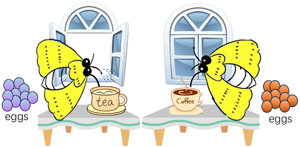No CrossRef data available.
Published online by Cambridge University Press: 25 November 2024

Microorganisms symbiotic with insects, whether permanently or temporarily, play a crucial role in the nutrition, development, reproduction, defence, and metamorphosis regulation. In some Lepidoptera, oviposition-deterrent pheromones (ODPs) on egg surface were used by pregnant females to modify the behaviour of conspecifics to avoid excessive competition for limited resources. In this study, we constructed four different Spodoptera litura groups, including, OH, OA, SH, and OA, which either feed on different hosts or grow in different environments. The 16S rDNA libraries of microbes from the egg surface of the four groups were constructed and sequenced. According to alpha and beta diversity indices, the microbes in environments and diets considerably influenced the richness, diversity, and community compositions of the microbiota on egg surfaces. The quantity of the main ODP components and the corresponding oviposition-deterrent activity among four groups were significantly differed among the four groups. The result of this study revealed that altering of microbes in environments or diets considerably changed the contents of ODP and oviposition-deterrent activity. As ODPs impart oviposition-deterrent activity towards closely related species, the findings of this study suggest that we should pay more attention to the role of symbiotic microorganisms in changing the ability of insects, especially sympatric species, to occupy the optimal niche when developing novel pest-control strategies.
Joint corresponding authors.
To send this article to your Kindle, first ensure no-reply@cambridge.org is added to your Approved Personal Document E-mail List under your Personal Document Settings on the Manage Your Content and Devices page of your Amazon account. Then enter the ‘name’ part of your Kindle email address below. Find out more about sending to your Kindle. Find out more about saving to your Kindle.
Note you can select to save to either the @free.kindle.com or @kindle.com variations. ‘@free.kindle.com’ emails are free but can only be saved to your device when it is connected to wi-fi. ‘@kindle.com’ emails can be delivered even when you are not connected to wi-fi, but note that service fees apply.
Find out more about the Kindle Personal Document Service.
To save this article to your Dropbox account, please select one or more formats and confirm that you agree to abide by our usage policies. If this is the first time you used this feature, you will be asked to authorise Cambridge Core to connect with your Dropbox account. Find out more about saving content to Dropbox.
To save this article to your Google Drive account, please select one or more formats and confirm that you agree to abide by our usage policies. If this is the first time you used this feature, you will be asked to authorise Cambridge Core to connect with your Google Drive account. Find out more about saving content to Google Drive.